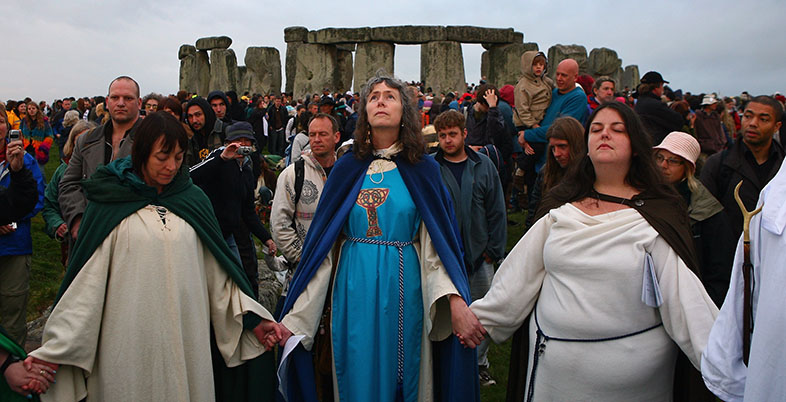2.2 Preconditions for the Sixties’ Spiritual Revolution
While Brown and others emphasise a rather sudden paradigm shift in the Sixties, others such as Hugh McLeod assert the importance of ‘long-term preconditions for the Sixties’.
Activity 3
Read this extract, and jot down a few words summarising each of the four key points about religious change.
From: McLeod, Hugh (2005). ‘The religious crisis of the 1960s’, Journal of Modern European History, 3/2, 205-230, extract at 205-06.
In the religious history of the West these years may come to be seen as marking a rupture as profound as that brought about by the Reformation.
First, and most obviously, nearly every Western country saw a decline in church membership and attendance, and a drop in the number of clergy and other religious professionals. In many cases the drop was severe. For instance, while 825 secular priests had been ordained in France in 1956, by 1975 the figure was 181. The proportion of Dutch Catholics attending mass in a week fell by half in just ten years between 1965 and 1975. During this period large numbers of people lost the habit of regular religious worship, and the social significance of priests and nuns diminished because their numbers had diminished so considerably.
Second, the ‘long Sixties’ saw a weakening of the processes by which Christian identity and knowledge of Christianity had been passed on to the younger generation. In some countries there was a substantial fall in the proportion of infants baptised, children attending Sunday Schools or catechism classes, and adolescents confirmed. In England, for instance, the latter statistic fell by half between 1956 and 1975. Religious education in schools continued, but it seems likely that this was less effective as a means of Christian socialisation than religious teaching in the home and in institutions, such as Sunday schools, directly connected with the church.
Third, this period saw a great multiplication of the world-views accessible to those in their formative years. In the 1950s the main options had been Christianity, Socialism and Scientism – or some combination of Christianity and Socialism, or of Socialism and Scientism. Other possibilities existed of course for the intellectually enterprising, but those who sought out more esoteric alternatives were likely to be dismissed as eccentrics. By the 1970s the options had widened enormously to include not only many new forms of Christianity and Socialism, but also various non-Christian religions and many kinds of ‘alternative spirituality’. Moreover, the period since the late 1960s had seen a flowering of feminism of many kinds. What had seemed eccentric in the Fifties now seemed to reflect a healthy degree of independent-mindedness. […]
Fourth, changes in the laws relating to such contentious issues as abortion and divorce, and changes in the treatment of religion by the media, reflected the assumption that what had formerly been professedly ‘Christian’ societies were now ‘pluralist’ societies, in which there was no consensus in some key areas of belief and ethics, and where the rights of a variety of groups, Christian and non-Christian, needed to be recognised.
Discussion
The criticism of traditional religion – and Christianity specifically – had a tradition going back to at least the seventeenth and eighteenth centuries, in the case of France. The changes in attitudes towards sexuality in the Sixties, though helped along by the contraceptive pill in the United States from 1960 and Europe from 1961, was, he argues, also decades in the making.
McLeod also suggests the importance of short-term preconditioning influences in the 1950s. There was rising affluence which, importantly, funded the emerging youth culture of the late 1950s. Also, in ‘elite’ circles there was a growing tendency to criticise traditional norms. It could be argued, therefore, that the ground was gradually being prepared for the Sixties over a longer period of time. However, despite the importance of these long and short-term preconditioning factors, McLeod nevertheless recognises the significance of the Sixties era itself.
